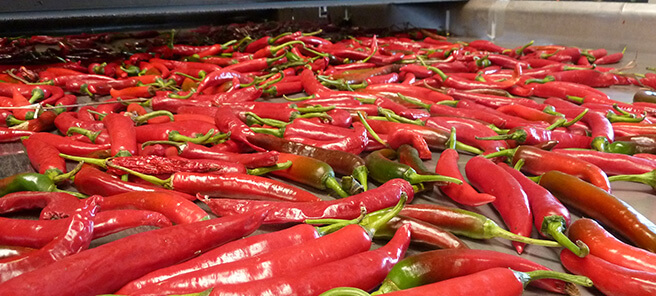Cooling and cool rooms use a great deal of energy; together with irrigation pumps, cooling accounts for 66% of greenhouse gas emissions from vegetable farms. Of course, the industry product has to get the market, retailer or processor in good condition. This generally means cooling products as quickly as possible and storing at the optimum temperature.
Years of postharvest research has aimed at maximising shelf life and quality of fresh produce. However, until now there has been little or no consideration of the energy required to achieve this outcome. Tables which list shelf life at optimum storage temperatures rarely list storage life at sub-optimal temperatures, even though such temperatures may easily allow for normal distribution and retail.
For example, broccoli storage life is maximised at 0C. Under optimal conditions at 0C some cultivars can remain acceptable for 2 months or even more. However, at 5C broccoli can be stored for 2 weeks without major loss of quality, while storage for up to 10 days is still possible at 8C (in the absence of ethylene). An efficient supply chain should deliver broccoli to retail within 3-4 days of harvest; even after unrefrigerated display in the store, broccoli initially cooled to 8C should still have several days “fridge life” following purchase.
Similarly, seedless watermelons are ideally stored at 7-10C, giving them a shelf life of around 3 weeks. Increasing the temperature to 15C has been found to shorten shelf life to 2 weeks (UCDavis). However, Australian research has shown that so long as temperatures are kept below 25C, watermelons can remain acceptable for 14 days or more. This means that – so long as ambient conditions are favourable - cool fruit may not require refrigerated transport.
Research into the effect of sub-optimal cooling and storage could deliver major savings to the vegetable industry. Questions that need to be answered include;
- What temperature do we need to achieve the shelf life and quality required for a given end use?
- Are there more efficient ways of managing field heat eg harvesting at night instead of during the day? forced air cooling instead of vacuum cooling?
- How quickly does temperature need to be reduced to still provide adequate shelf life and quality?
- How can we minimize energy requirements while still providing good shelf life?
